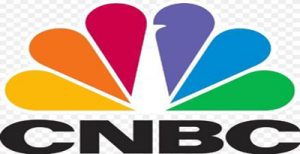What is Slack? Behind the Company That’s Kind of IPO-ing
Slack has taken company communications by storm – but a lot of people still don’t really understand what it is or why investors are so interested in the business.
In this video, we break down Slack and explain why some think it’s the future of enterprise software.
Slack’s namesake platform is a cloud-based collaboration tool – most people would describe it as a messaging service, but it does so much more. With Slack, users can share files, create project-based channels and easily communicate with teammates around the globe.
Instead of the siloed approach email offers, Slack allows new teammates to access information that was added before they joined on. Slack’s name really says it all, it’s an acronym and stands for: Searchable log of all communication and knowledge.
The software was born out of frustration — the staff at the company that would eventually become Slack couldn’t find an enterprise communication tool that fit the needs of their business… so they decided to build their own. To-date, the service has been wildly successful.
Slack is using the classic software as a surface approach of land and expand with its “freemium” model. It’s free with limited functionality for small organizations. As the companies grow, and their needs grow too, they can move to paid tiers ranging from $6.67 to $15 per month per user.
Right now over 600,000 organizations use Slack, including 88,000 paying customers. The average user spends 90 minutes per day on Slack and the service is used to send 1 billion messages a week.
All those metrics point to the fact that users like Slack, and the more they use the service, the stickier – or harder to leave – it becomes.
All that employee communication turns Slack into a knowledge repository for a business, which means companies can’t switch to a competitor without losing the accumulated, easily accessible knowledge.
The company has been able to turn all this into the beginnings of a solid software as a service business. Slack collected $400 million in revenue in fiscal 2019 – up 82% year-over-year — and management thinks they’re just getting started.
They’re looking to take a sizeable bite out of the market for workplace communication and collaboration software – an industry they estimate could be worth $28 billion in 2020.
Slack’s fast growth and sizable addressable market are two big reasons why investors have been eying the company. Like a lot of early tech companies, Slack is losing money right now, but the hope is that at a larger scale the business can ratchet down its sales and marketing spend and get into the black.
Looking at the financials, the story seems to make sense. Software is generally high-margin and Slack is no exception. The company posted 87% gross margins in its last fiscal year, a sign that down the road the business could print cash for investors.
Of course all this potential also has market expectations and Slack’s valuation high, and the business will be going up against some big names in the enterprise software segment, namely Microsoft.
So far, the company has thrived by creating its own category of communication, but as it gets bigger, the competitive heat might turn up. Now that shares are publicly traded via the company’s direct listing, we’ll get a lens into exactly how that fight plays out.
————————————————————————
Subscribe to The Motley Fool’s YouTube Channel:
http://www.youtube.com/TheMotleyFool
Join our Facebook community:
https://www.facebook.com/themotleyfool
Follow The Motley Fool on Twitter:
Tweets by themotleyfool

























